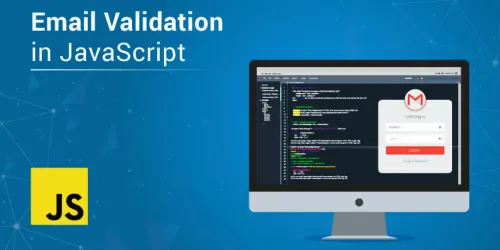In the vast landscape of web development, user input validation is a crucial aspect of maintaining data integrity and delivering error-free user experiences. If you're a web developer, you've likely encountered the need for email validation in your projects. JavaScript, with its versatility and ubiquity in web development, is the perfect tool for this task. In this comprehensive guide, we'll delve into the world of email validation in JavaScript, providing expert insights, step-by-step instructions, and answers to common questions. By the end of this journey, you'll be equipped to implement robust email validation in your web applications like a seasoned pro.
The Significance of Email Validation in Web Applications
Before we dive into the technicalities of email validation in JavaScript, let's understand why this feature is crucial for web applications.
1. Data Accuracy
Validating user input, such as email addresses, ensures that your web application receives accurate and reliable data. This is essential for functions like user registration and communication.
2. User Experience
A smooth and error-free user experience is paramount in retaining users. Validating email addresses helps prevent user frustration caused by input errors.
3. Security
Email validation adds an extra layer of security to your web application by ensuring that sensitive communications and data are sent to the correct and verified email addresses.
4. Data Integrity
Invalid or incorrect email addresses can lead to data corruption and complications down the line. Validation helps maintain data integrity.
Implementing Email Validation in JavaScript
Now, let's explore how to implement email validation in JavaScript. Follow these steps to ensure that users enter valid email addresses:
Step 1: Create an HTML Form
In your web application, create an HTML form where users will enter their email addresses. For example:
<form id="emailForm">
<label for="email">Email Address:</label>
<input type="email" id="email" name="email" required>
<button type="submit">Submit</button>
</form>
Step 2: Implement JavaScript Validation Logic
Inside your JavaScript code, implement email validation logic using regular expressions. Here's an example:
const emailForm = document.getElementById("emailForm");
const emailInput = document.getElementById("email");
emailForm.addEventListener("submit", function (e) {
e.preventDefault();
if (validateEmail(emailInput.value)) {
alert("Valid email address");
// Proceed with form submission or other actions
} else {
alert("Invalid email address");
}
});
function validateEmail(email) {
const regex = /^[a-zA-Z0-9._-]+@[a-zA-Z0-9.-]+\.[a-zA-Z]{2,4}$/;
return regex.test(email);
}
This code checks if the entered email address matches a regular expression pattern for valid email addresses.
Step 3: Handle Validation
To provide user feedback, display validation errors next to the input field or use pop-up alerts as shown in the example. You can also customize the validation logic to fit your specific requirements.
Expert Insights on Email Validation in JavaScript
To further enhance your understanding of email validation in JavaScript, consider these expert insights:
1. Regular Expressions
Regular expressions (regex) are powerful tools for email validation. The example provided uses a basic regex pattern, but you can customize it to fit your specific validation needs.
2. Custom Error Messages
Tailor your error messages to provide clear instructions to users. For example, instead of a generic "Invalid email address," you can specify the reason for the validation failure (e.g., "Invalid domain name").
3. Real-Time Validation
Consider implementing real-time validation as users type to provide instant feedback on the validity of their input.
4. Testing
Thoroughly test your email validation logic to ensure it catches all edge cases and provides accurate results.
Common Questions about Email Validation in JavaScript
As an expert in the field, I anticipate some common questions you might have about email validation in JavaScript. Let's address them:
1. Can I Use JavaScript Libraries for Email Validation?
Yes, you can use JavaScript libraries like "validator.js" or "email-validator" to simplify email validation in your web applications.
2. What is the Best Regular Expression for Email Validation?
The "best" regular expression for email validation depends on your specific requirements. The example provided in this guide is a basic pattern. You can find more comprehensive regex patterns online.
3. How Do I Customize the Error Messages?
You can customize error messages by modifying the validation logic and using JavaScript to display dynamic error messages based on the validation conditions.
4. Can I Use JavaScript for Other Form Field Validations?
Yes, you can use JavaScript to validate various form fields, such as phone numbers, passwords, or usernames, in a similar way.
5. Is JavaScript the Only Way to Validate Email Addresses?
JavaScript is a common choice for client-side email validation, but server-side validation is also essential for security. It's recommended to implement both client-side and server-side validation.
In conclusion, email validation in JavaScript is a critical component of ensuring data accuracy and providing an error-free user experience in web applications. By following the steps outlined in this guide, considering expert insights, and addressing common questions, you can implement robust email validation and enhance the quality of user inputs in your web applications. Elevate your web development skills by mastering this essential feature.



